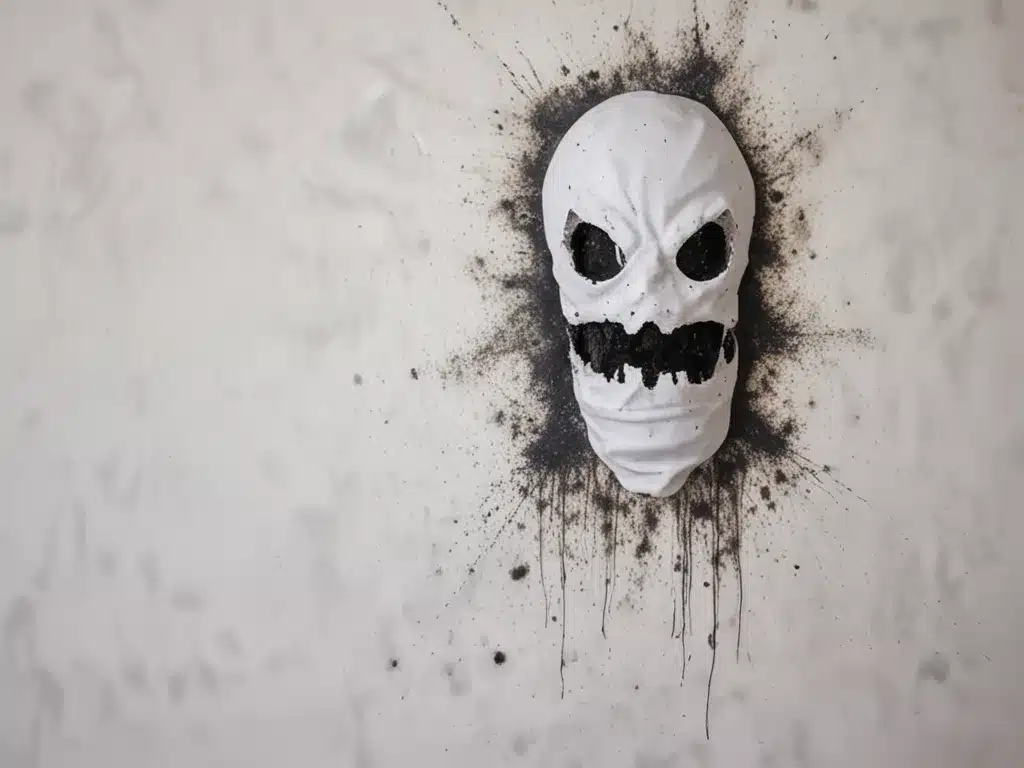Black mould, also known as Stachybotrys chartarum, can be a scary sight in any home. As a homeowner, I have had my own battles with this toxic mould and learned a lot through the process of removing it safely and effectively.
What Exactly is Black Mould?
Black mould is a greenish-black mould that grows on materials that have gotten wet and haven’t dried for a prolonged period. It grows best on cellulose materials like paper, cardboard, ceiling tiles, and wood products. Black mould thrives in damp, warm environments like basements, bathrooms, and places where water damage has occurred.
Unlike other moulds that are commonly found in homes, black mould is highly toxic and can cause a wide range of health issues. It produces spores that when disturbed, release mycotoxins into the air that can cause allergic reactions and breathing issues if inhaled. Long term exposure can suppress immune system function.
How to Identify Black Mould
Detecting a black mould problem early is key to controlling it before major growth occurs. Here are some tips on identifying black mould:
-
Look for visible growth – Black mould appears greenish-black and will grow in clusters on damp surfaces. Look closely at wall corners, under sinks, basement walls.
-
Detect a musty smell – Black mould has a distinct musty, earthy smell that is stronger in areas of growth. Trust your nose to sniff it out.
-
Watch for condensation – Areas prone to condensation like windows, exterior walls are prime areas for black mould. Condensation provides the moisture mould needs.
-
Note health symptoms – Allergies, coughing, and asthma symptoms that appear or worsen indoors could indicate a mould problem.
Dangers and Health Risks of Black Mould Exposure
Black mould exposure even in small amounts can cause chronic health issues, especially for children, elderly, or those with respiratory conditions. Possible symptoms from black mould include:
- Wheezing, chest tightness, coughing
- Sore throat, runny nose, congestion
- Headaches, fatigue, nausea
- Rashes, watery eyes, sneezing
The mycotoxins produced by black mould are very toxic and can suppress the immune system and damage DNA over time. Long term exposure has been linked to problems like impaired learning and memory, ADHD, and mood disorders. Infants under 1 year are most at risk.
How to Test for and Remove Black Mould
If black mould is suspected, proper testing and removal is crucial. Here is an overview of the process:
Testing for Black Mould
-
Professional testing – Hire a professional mould inspector to take samples for lab analysis to positively identify black mould. Look for an inspector with specific training in mould analysis.
-
DIY testing – Black mould test kits are available to detect spores. Take multiple samples in different areas for most accurate results.
-
Consider hiring a professional – Due to the health risks, a professional mould remediation company is recommended for removal. Get multiple quotes.
Removing Black Mould
-
Wear proper PPE – N95 respirator mask, goggles, gloves, full body coveralls. Limit exposure.
-
Isolate contaminated area – Seal off with plastic sheeting to prevent spore spread. Turn off any HVAC systems.
-
Remove materials – Discard any porous materials like drywall and wood that are affected. Bag and dispose of properly.
-
Clean surfaces – Scrub affected hard surfaces with detergent and water to remove mould. Use bleach where applicable.
-
Dry quickly – Eliminate moisture sources. Use dehumidifiers, fans, and open windows to dry area quickly to discourage regrowth.
-
Disinfect – Fogging with an EPA registered antimicrobial disinfectant will kill spores and prevent new colonies.
-
Prevent future growth – Fix underlying moisture issues like leaks, improve ventilation, and maintain low indoor humidity.
Tips for Preventing Black Mould Growth
Prevention is the best defense when it comes to keeping black mould out of your home. Here are some key prevention tips:
-
Maintain indoor humidity under 50% using dehumidifiers and air conditioning. Mould loves moisture.
-
Make sure bathrooms, laundry rooms, and basements have exhaust fans vented outside to reduce moisture. Run them during and after showering or doing laundry.
-
Watch for condensation and wet spots on windows, walls, and foundations. Wipe up immediately and monitor those areas.
-
Fix any water leaks or flooding right away. Prevent water damage that can lead to mould growth.
-
Improve airflow and ventilation in “mould prone” areas like attics, crawlspaces, and closets.
-
Clean bathrooms regularly with antimicrobial products to inhibit mould in showers and sinks.
With vigilance and proper prevention, black toxic mould can be controlled. But if it takes hold, take it seriously and hire professionals to test and remove it thoroughly. Protect your home and your family’s health.







